
|
Reservoir Characterization to Inexpensively Evaluate
the Exploitation Potential of a Small Morrow Incised Valley-fill
Field
|

Kansas Geological Survey
Open-file Report 2002-9 |
Core Petrophysical Properties
Overview
Fundamental reservoir rock properties needed for reservoir
simulation included: porosity, permeability, pore volume compressibility,
capillary pressure, oil-water imbibition relative permeability,
and gas-oil relative permeability. To calibrate wireline log-measured
water saturations with capillary pressure-predicted saturations,
Archie cementation and saturation exponent data were also measured
and used in log analysis. The project integrated new data and
routine and advance core analysis data from previous Morrow investigations.
Two Morrow core were available from the Minneola Unit and full-diameter
core analysis data were previously measured by commercial laboratories
for four wells in the unit. Porosities from these cores and well
wireline-logs were used to map and assign gridcell porosities.
To understand the relationship between rock lithofacies and petrophysical
properties and obtain data for advanced reservoir properties,
core plugs were obtained from the two cores. Measured properties
were analyzed and integrated to develop general reservoir property
models that could be used in construction of a reservoir simulation
model and assignment of gridcell properties in the simulator.
General Morrow Petrophysics and Lithofacies
Integration of geology and core analysis for the Morrow Sandstone
in southwest Kansas provides an understanding of lithologic controls
on petrophysical properties, equations relating petrophysical
variables, and guidelines for predicting hydrocarbon producibility
in estuarine Morrow Sandstone reservoirs. In previous investigations
(Butois et al, 1999; Byrnes , 2000,2001) fifteen estuarine and
marine lithofacies have been identified. In general, petrophysical
properties are closely tied to lithofacies and interpreted depositional
environments. Routine porosity values range from 0 to 22% with
in situ porosities averaging 92% of routine values. Fluvial and
upper estuarine channel facies exhibit maximum porosity and permeability.
Capillary pressure properties of Morrow Sandstone samples differ
significantly between lithofacies. At 100 ft of oil column height
above free water level, fluvial and upper estuary channel deposits
exhibit water saturations below 25% while estuary mouth, restricted
tidal flat, and upper shoreface deposits generally exhibit values
greater than 50%. Lower shoreface and deeper water deposits generally
display water saturations greater than 90%. Water saturations
for all facies increase with decreasing permeability. In situ
permeabilities range from 0.0001 to 200 millidarcies. Highest
porosity and permeability values were measured in the fluvial
and upper estuary channel sandstones. Extensive clay drapes, bioturbation,
and increasing silt content result in significant decrease in
permeability in tidal flat and marine facies. Permeability can
be log-linearly correlated with porosity with each facies exhibiting
a unique sub-parallel trend. The Archie cementation exponent averages
near m=1.81 for fluvial and upper estuary channel facies and
is approximately m=2.00 for many of the other facies.
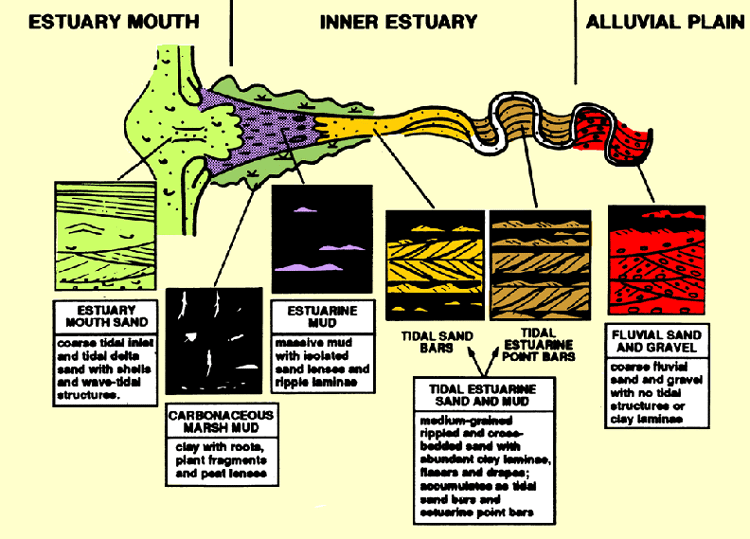
(From Allen and Posamentier, 1994)
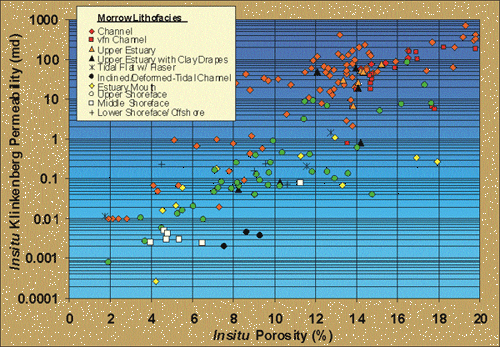
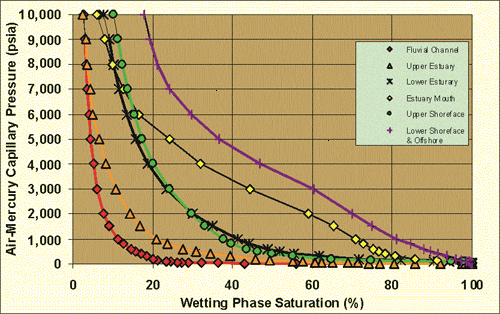
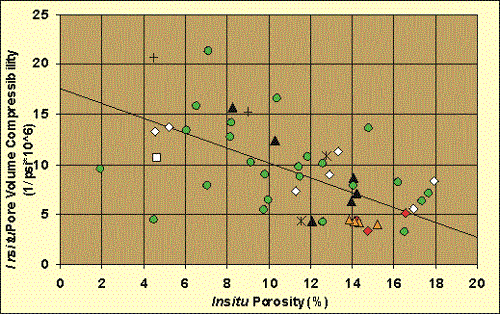
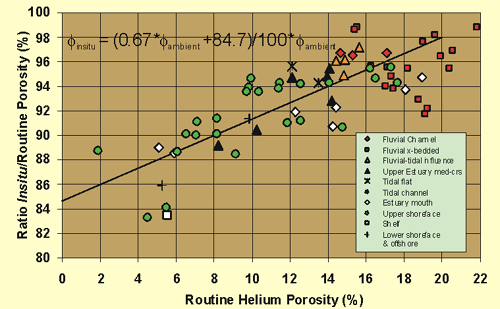
e-mail : webadmin@kgs.ku.edu
Last updated March 2002
http://www.kgs.ku.edu/PRS/Poster/2002/2002-9/P2-01.html





